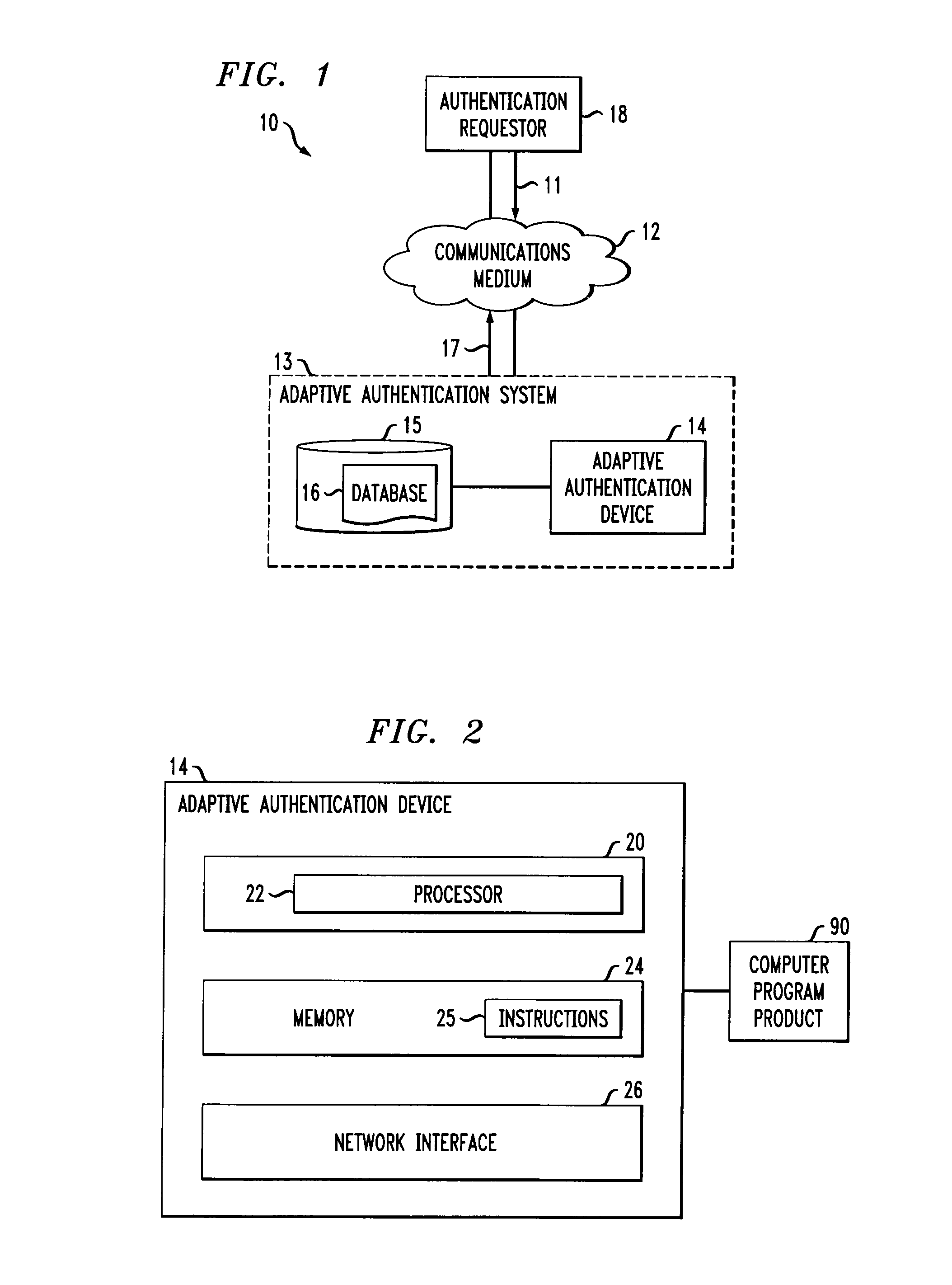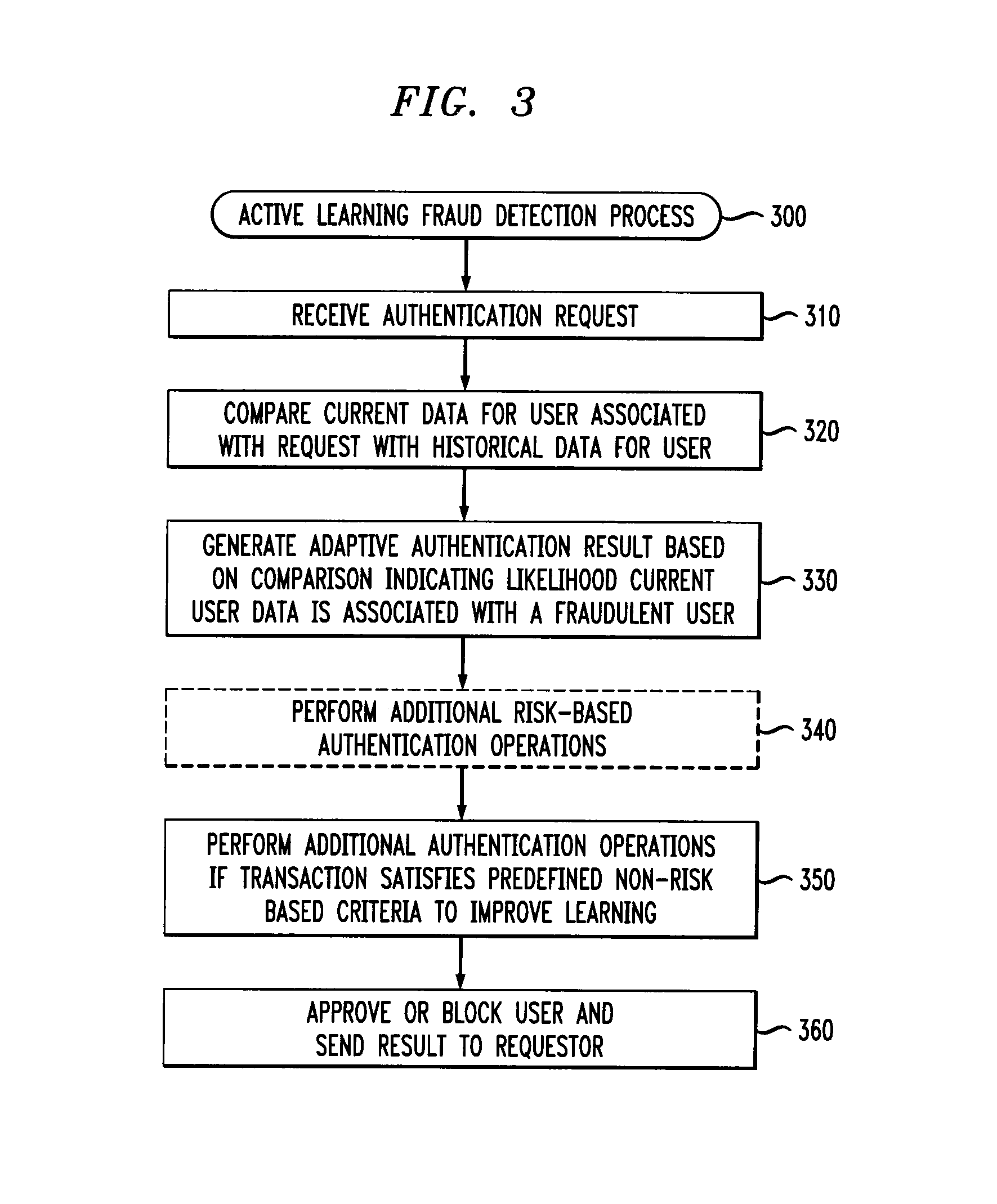Active learning-based fraud detection in adaptive authentication systems
a fraud detection and adaptive authentication technology, applied in the field of network communication system fraud detection techniques, can solve the problems of high risk of being a fraudulent user, inability to improve the classifier results over non-challenging events, and fraudulent users, so as to improve the classifier results and improve security
- Summary
- Abstract
- Description
- Claims
- Application Information
AI Technical Summary
Benefits of technology
Problems solved by technology
Method used
Image
Examples
Embodiment Construction
[0012]The present invention provides active learning-based fraud detection in Adaptive Authentication (AA) systems. According to one aspect of the invention, an Adaptive Authentication system includes an active learning mechanism to improve classifier results. Active learning is employed to identify transactions where a further challenge (i.e., query) should be issued to improve the classifier results. Generally, conventional learning techniques select transactions to challenge based on a risk assessment of the transaction. The answer to the challenge is typically applied to an adapting algorithm, and the classifier is modified using supervised learning to fit the new information.
[0013]According to a further aspect of the invention, transactions are selected for further challenge if they satisfy one or more predefined non-risk based criteria to improve the learning of the system (and not based solely on a risk assessment of the transaction). In this manner, the detection accuracy of...
PUM
 Login to View More
Login to View More Abstract
Description
Claims
Application Information
 Login to View More
Login to View More - R&D
- Intellectual Property
- Life Sciences
- Materials
- Tech Scout
- Unparalleled Data Quality
- Higher Quality Content
- 60% Fewer Hallucinations
Browse by: Latest US Patents, China's latest patents, Technical Efficacy Thesaurus, Application Domain, Technology Topic, Popular Technical Reports.
© 2025 PatSnap. All rights reserved.Legal|Privacy policy|Modern Slavery Act Transparency Statement|Sitemap|About US| Contact US: help@patsnap.com



